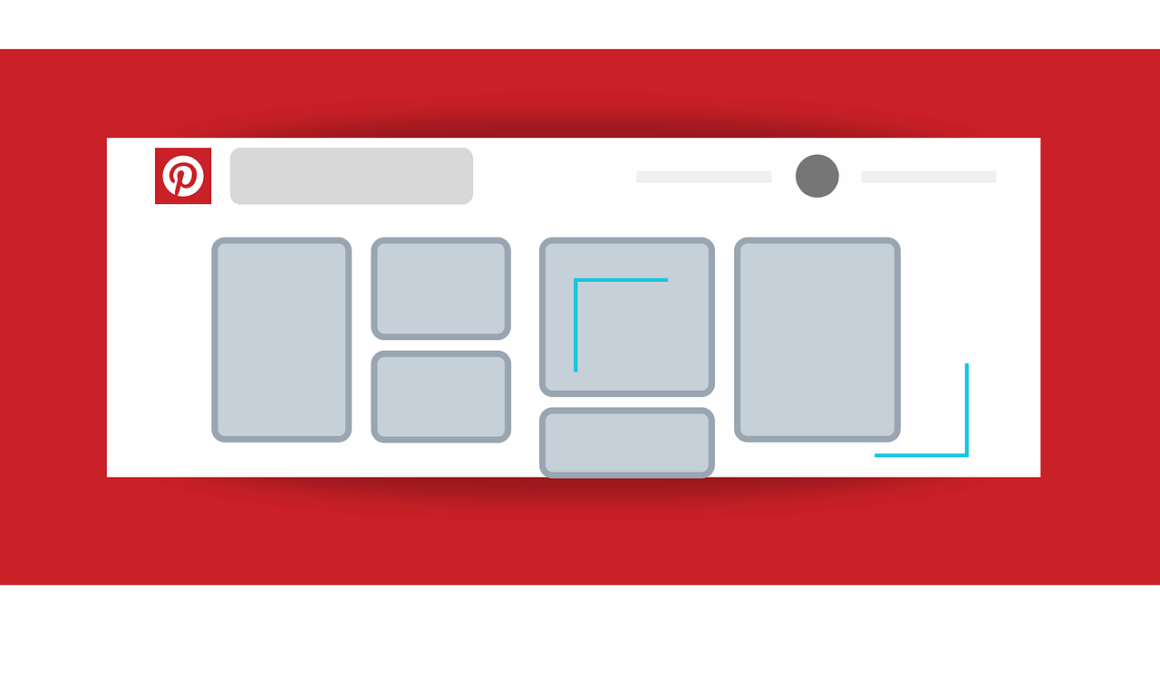Analyzing Competitor Pinterest Strategies in Digital Marketing
Pinterest has evolved into a vital platform for digital marketing, outpacing traditional avenues by offering unique ways to engage with target audiences. Analyzing competitors on Pinterest allows businesses to peek into successful strategies and adopt similar techniques for their marketing needs. Begin this assessment by identifying key players within your niche, analyzing their boards and pins. Look for patterns in engagement metrics such as likes, repins, and comments. Understanding competitor trends fosters an environment of creative adaptation, pushing marketing efforts further. Pay close attention to the topics they prioritize. Are they focusing on seasonal content, giveaways, or tutorials? Each approach carries different implications for market appeal and engagement. Utilize tools such as Tailwind or Pinterest Analytics to garner deeper insights into performance metrics. Additionally, observe how competitors engage with their community through comments or collaborative boards. Establishing a presence requires not only well-crafted pins but ongoing interactions to nurture a loyal audience. Collect this data systematically to inform your unique Pinterest marketing strategies. Ultimately, the goal is to refine your approach based on competitor insights without losing your distinctive brand voice.
Understanding the Visual Appeal
Visual content remains at the heart of successful Pinterest strategies, serving as the first point of contact for users. Competitors leverage high-quality images, engaging infographics, and original artwork to capture audience interest. Focus on how your rivals craft their pins, particularly the design, use of colors, and typography, all of which contribute to their branding. Specific themes in their visuals will help reveal their target demographics. Analyze whether they employ a consistent style across boards, reflecting their overall brand message. Additionally, note any trending designs that seem to attract significant engagement. This could prompt your own design evolution to align with current visual preferences. Observing how they utilize visuals in their descriptions can also offer key insights. Strong calls to action often accompany effective visuals, guiding potential customers toward their products or services. Remember to incorporate similar creativity into your own pins while ensuring they remain true to your brand identity. In expanding this visual reach, implementing A/B testing might provide enlightening feedback for refining your designs. Experimenting with visual formats can help in identifying what resonates best with your audience.
Keyword strategies play a pivotal role in maximizing Pinterest visibility and enhancing user engagement. Successful competitors often utilize a strategic blend of trending and niche keywords in their pin descriptions and boards. Identifying these keywords begins with the Pinterest search bar, which auto-suggests popular queries. This provides valuable insights into what users are actively searching for. By analyzing competitors, you can discover which keywords yield the highest interaction rates. Keep an eye on their board titles and descriptions, noting any recurrent terms and phrases. Integrating these relevant keywords into your content can enhance discoverability significantly. Additionally, explore the use of hashtags, as they can further boost posts visibility on this platform. However, remember that overstuffing keywords may dilute content quality and readability. Striking that balance is essential for engaging potential customers and ranking well. There’s value in monitoring how frequently your competitors update their pin descriptions and keyword strategies, as this can provide hints for timely adjustments within your own Pinterest strategy. As trends evolve, being agile in your keyword tactics helps maintain a solid online presence.
Engagement Tactics
Engaging audiences is at the forefront of Pinterest marketing, and analyzing competitors’ tactics in this area reveals valuable strategies. Successful brands consistently interact with followers through various methods, including engaging posts and effective visuals. Observe how they use calls to action in their descriptions to motivate user interactions. Many rivals adopt strategies like repinning user-generated content or featuring customer testimonials, which often fosters community involvement. Look for common themes in their boards that address seasonal trends, giveaways, or fragment campaigns targeting specific events. Such tactics can encourage increased sharing and engagement. Examine how competitors respond to comments or reach out to followers, as engagement surpasses mere content creation. Regular interaction not only boosts visibility but also strengthens community relations around brand loyalty. Furthermore, utilizing Pinterest’s story pins can facilitate more dynamic engagement opportunities. Offer tips and utilize polls in story formats to encourage viewers to engage actively. This approach often creates shareable content that enhances reach. Adjusting your strategy to incorporate these engagement tactics can lead to improved followership and showcase your brand as approachable and invested in its audience.
Analyzing your competitors’ Pinterest frequency and timing is critical for optimizing your posting schedule. Successful competitors often share content at key times when audience engagement peaks, significantly impacting reach and interaction. Tools like Buffer or Later can help to determine the optimal times based on historical engagement data. Tracking these timings over an extended period permits a clearer understanding of patterns within your specific niche. Additionally, evaluate the types of content they post frequently to gauge preferences among their audiences. Identify whether they focus more on promotional content or educational posts. This can illuminate your content strategy, guiding whether your brand will thrive on informative or branded content. Remember that consistency in posting not only increases visibility but serves to build a reliable presence for your followers. Engaging with current events or timely promotions also can yield substantial interaction as audiences crave current relevance. Adapting your posting frequency based on competitor analysis and audience feedback can lead to sustained growth. Ultimately, finding the right balance between quality content and scheduling will drive ongoing engagement and retention.
Collaborations and Partnerships
Collaborations on Pinterest can multiply visibility and audience reach significantly. Assess how your competitors partner with other brands, influencers, or even users to optimize their content strategies. Look for collaborations reflected through joint boards, guest posts, or promotions that feature both entities. Successful partnerships enhance credibility through association while expanding reach to new audiences coordinated for shared missions. Note the ways in which competitor collaborations achieve community-driven content, thus fostering a sense of belonging among followers. Creating collaborative projects not only diversifies content but also introduces networking opportunities. Research popular influencers in your niche who align with your brand values for potential partnerships. Establishing these relationships ought to be mutually beneficial, assisting in audience growth while enhancing content quality. Investigate campaigns in which competitors have successfully engaged in influencer partnerships, exploring what made them effective in terms of reach and engagement. Adopting similar collaborative strategies within your marketing plan can drive substantial growth. Examine results from these partnerships carefully, taking notes on what appears to resonate best within target audiences to refine future collaborations.
Leveraging analytics tools becomes essential when analyzing competitors’ Pinterest strategies. Measurement tools help decode insights into user engagement, content performance, and audience behavior. Competitor analysis should leverage tools like Pinterest Analytics, Tailwind, or SEMrush. These allow for tracking essential metrics, including meets, repins, and clicks. By closely monitoring competitors’ performance, you can discern what content performs exceedingly well and what appears to hold less impact. Such data can guide your content creation efforts, ensuring that each pin honors user interests while boosting performance. Checking competitors’ follower growth trends over time also can reveal models of successful practices, honing in on effective tactics. Benchmarking their performance against yours offers valuable insights into potential areas for improvement that typically require attention. Evaluating which boards yield the highest engagement can further spotlight effective themes. Regularly analyzing this data keeps your strategies aligned with competitory benchmarks, highlighting areas where you can innovate. Utilizing these insights encourages informed content decisions, ultimately empowering your brand’s visibility and engagement across Pinterest.


